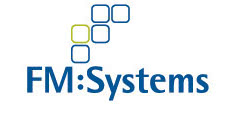Facility Maintenance
Facility Managers Turn to Building Information Modeling

You are your home’s facility manager.
You turn off the lights when a room is no longer in use; you monitor your thermostat and unplug kitchen appliances after a meal. While conserving for only one house and a few individuals, this small job becomes quickly inefficient. Remembering to manage a single home becomes difficult, especially with children or a constant stream of guests. But imagine monitoring and conserving energy for a corporate building that houses over 5,000 employees. Visualize managing a university campus teeming with careless students.
Conserving the lights, the heat, and the use of appliances becomes near impossible without Facilities Management software. With buildings accounting for 65% of electricity use as well as serving as the second largest line item on institutional and commercial building balance sheets, businesses can’t afford to be careless.
Introducing Building Information Modeling
Building Information Modeling (BIM) utilizes the architectural building plans to construct an accurate three dimensional representation of a building system. In order to help conserve energy in a visual and easy-to-understand manner, facility managers have turned to this recently popular technology implemented in Facility Maintenance software. It works as both a visualization tool and as a database, storing a wealth of information related to building components. With BIM in hand, buildings have the tools to reduce energy use by 25% and cut carbon emissions by 33%.
In the recent past, architects constructed their buildings with two-dimensional computer aided drafting methods that were not easy to interpret by other parties. This in turn resulted in the loss of valuable data that went into planning, designing, and constructing.
Today, BIM is a way to share data through the lifecycle of the built environment, resulting in a way to jumpstart efficiency as soon as the building is conceived. While data comes from seemingly fixed building plans, BIM in facility management is flexible, allowing the building owner to modify as needs and circumstances change.
BIM Benefits
BIM includes data that may not seem immediately relevant: architectural, structural, plumbing, mechanical, and electrical data. However, it can guide facility managers to draft emergency response plans, manage space, and document repairs. To make matters easier, facility managers can add information during the construction phase so the BIM will be ready immediately post-construction. BIM is capable of add-on solutions that go beyond energy conservation by interpreting the provided data and comparing it to code compliance. This generates suggestions toward better practices for sustainability, further ensuring that emissions are cut by up to one third.
BIM improves space management, lengthens the building life cycle, and better maintains equipment. This allows managers to analyze and better facilitate how to use rooms for maximum efficiency, informing building owners on how to spread out or condense people per room. Space management becomes particularly helpful in hospitals and universities, where the number of people and the size of groups demanding space fluctuates on a large scale. The three dimensional representation is easy to navigate, serving as a huge asset when considering the needs of a classroom, a conference room, or a patient’s suite.
Moving Forward with BIM
Many Facilities Manage ment systems integrate BIM into their software. FM:Systems serves as a great example. By connecting to Autodesk Revit, FM:Systems is able to create a working dialogue between architects and facility managers during design, construction, and the building life cycle afterward. The cloud-based system manages space real-time, accommodating the needs of fast-paced institutions that integrate constant change of space.
ment systems integrate BIM into their software. FM:Systems serves as a great example. By connecting to Autodesk Revit, FM:Systems is able to create a working dialogue between architects and facility managers during design, construction, and the building life cycle afterward. The cloud-based system manages space real-time, accommodating the needs of fast-paced institutions that integrate constant change of space.
BIM does not simply reduce the utility bill and carbon emissions; it promotes an efficient business. The tool can help a facility manager visualize a building of any size or witness how employees utilize space. By seeing progress and understanding the big picture of the building’s operation, facility managers can expand the building’s life cycle indefinitely and promote an always improving business. While serving as the facility manager for one household seemed daunting — and a corporate building, a bit scary — with BIM you are equipped with the tools to manage it all.
Learn more about facility management software by downloading our free Top 10 Facility Maintenance Software comparison report, or browse reviews and facility management insights on the Business-Software blog.





